Got Nagging Shoulder Issues? The Fix Is In, Thanks to IsoMax Isometrics…
By Matt Schifferle
Death and taxes.
They say those are the only two certainties in life, but allow me to add one more: shoulder injuries.
I’ve been lucky enough to avoid injury in the gym. Most of my scars are from crashing my mountain bike or doing something foolish in my youth. Yet nagging shoulder issues used to be a constant companion in my training, especially when pressing many barbells.
Like many, I accepted my nagging shoulder issues as the cost I had to pay for heavy training. Shoulder injuries were so common among my peers that such pains were almost a point of pride. Sore shoulders meant we were driving our body to the edge and beyond. Little did I know that a single isometric exercise would have saved us all from years of pain and limited potential.
The shoulder joint is versatile, allowing the arm to work in various movements. Unfortunately, all of that range comes at the cost of potential instability. Couple that instability with heavy loads, and it’s no wonder shoulder pain is an ever-present companion for many lifters.
I suffered my first shoulder injury back when I was a Taiko Drummer in high school. Pounding a drum with as much force as possible for hours on end quickly took a toll on my rotator cuff.
That first injury led to several months of rehab on my left shoulder. I thought I was in the clear, but a loud "POP" in my right shoulder told me otherwise while performing overhead presses.
I didn’t know it at the time, but that pop and the searing pain that followed was a turning point for me. The injury to my shoulder was so debilitating that I couldn’t even bench press an empty bar without pain shooting down my arm for several years. I could still do push-ups, dips, and even handstands entirely pain-free. That realization led me down the rabbit hole of progressive calisthenics, which continues to define my body and career.
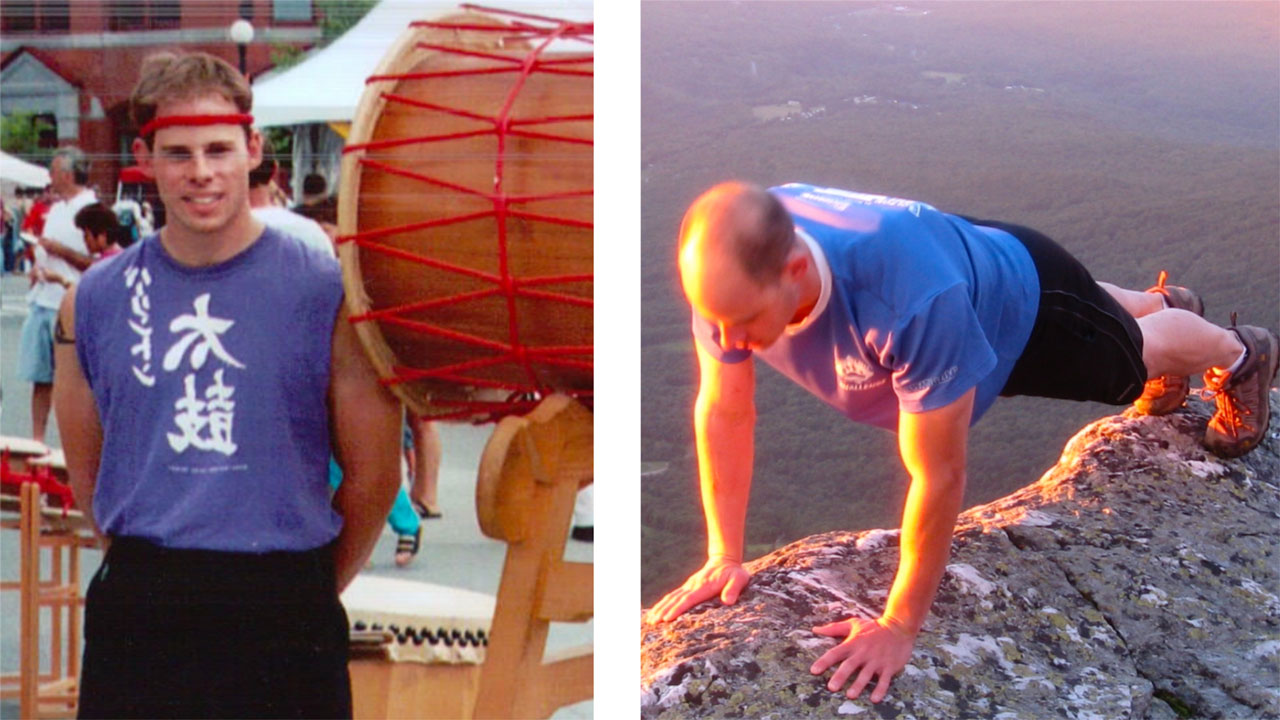
I wish I could say that bodyweight training solved my shoulder problems once and for all, but that’s not quite the case. Calisthenics allowed my shoulders to work in a more free and natural movement pattern, but I continued to have problems for over a decade. It wasn’t until I supplemented my training with isometrics that I could finally injury-proof my shoulders.
It’s not about the shoulders
Isometric training is a very effective diagnostic tool for exposing hidden weaknesses and imbalances. That was certainly the case when I first started using an Isochain. I immediately learned that while I had a decent amount of pulling strength, my pushing power was lagging.
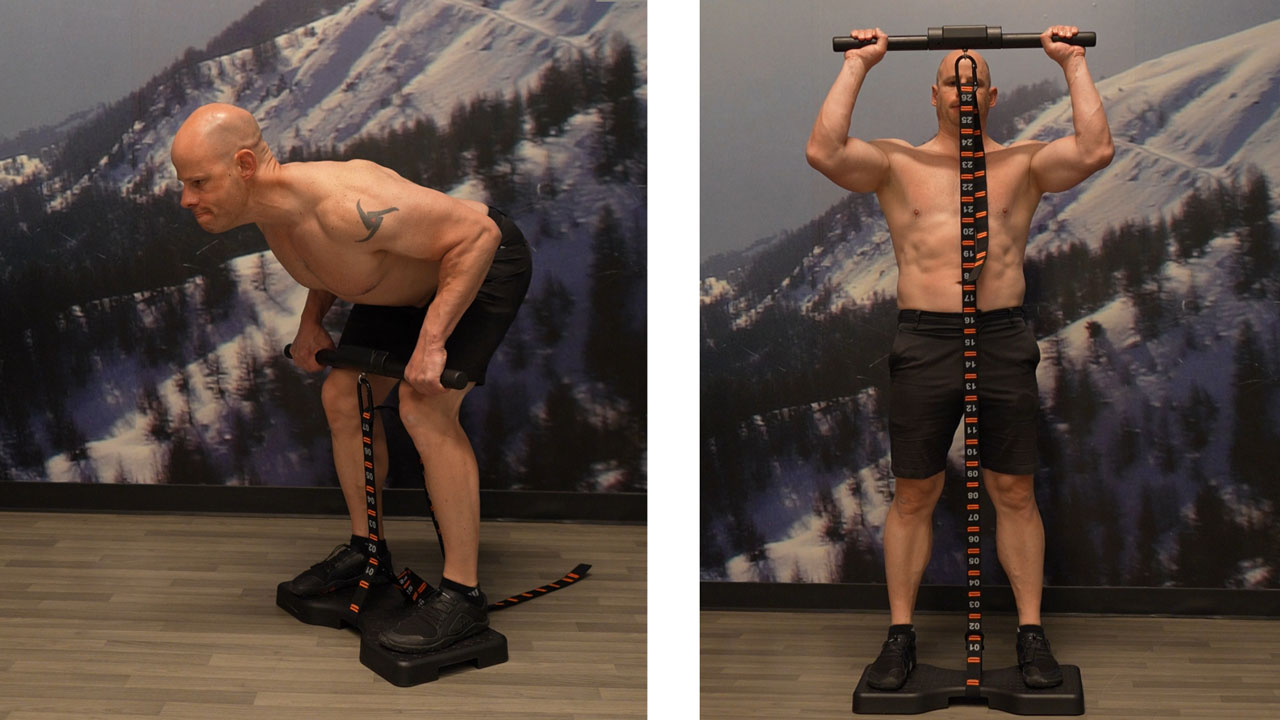 Pulling strength I had in spades, but pushing strength was a different story.
Pulling strength I had in spades, but pushing strength was a different story.
It wasn’t just that I couldn’t apply much force to the bar but also that I had significantly less stability. My arms would shake like gelatin every time I did a chest or shoulder press.
At first, the standing isometric chest press was almost impossible for me to do. I felt awkward and experienced stress in my joints rather than my muscles, which is never a good sign. I figured I would work out the kinks with time and practice, but that didn’t happen. Months later, I still had the same shaky, unstable, and uncomfortable experience with isometric pressing.
I didn’t have a breakthrough until I was preparing to film the
Dragon Door IsoMax Isometric Video Course. In preparation, I started to play with some of the less popular isometric exercises that can be done with the Isochain and
IsoMax, one of which was the standing lat-pull or shoulder extension.
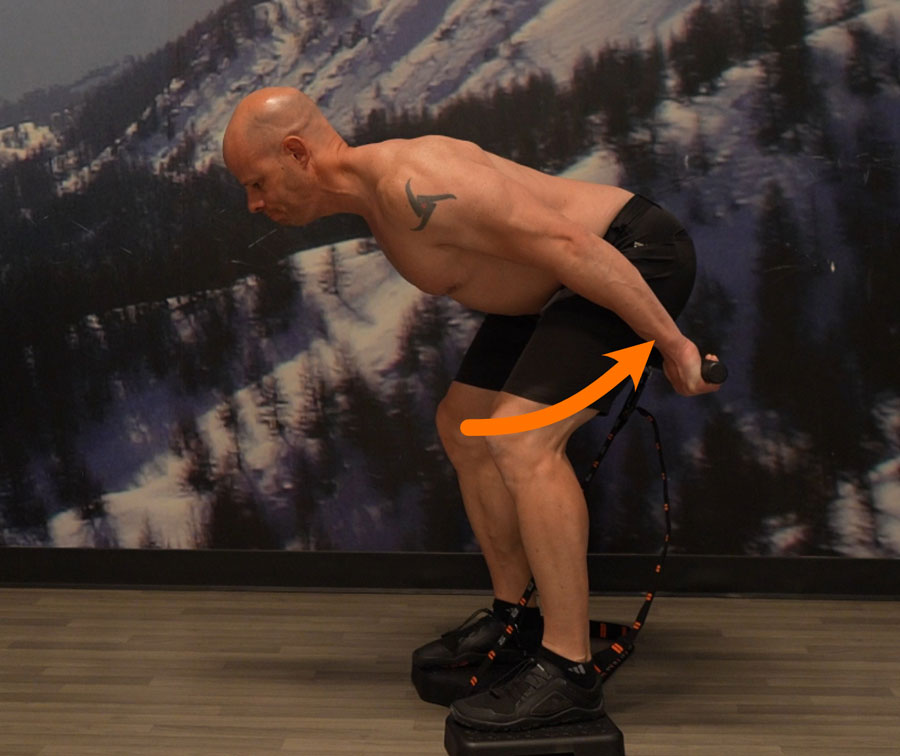
The isometric lat pull is one of the easiest ways to improve strength and tension control in the lats quickly. I incorrectly thought that years of pull-ups and rows were sufficient for building my lats, but I was wrong. After all, you can only work a muscle to the degree you can engage it, and the lats are often one of the under-engaged muscles in the body.
Improving the activation of the lats created a tsunami-size ripple effect throughout my entire body. It’s an exercise that improves posture, enhances breathing, and helps manage stress in the upper traps, neck, shoulders, and lumbar region. These changes, in turn, improve shoulder alignment, which further enhances the activation in the chest, deltoids, biceps, triceps, and even gripping muscles.
I knew waking up my lats was doing something when I noticed a profound improvement in the standing chest press. Whereas that exercise felt awkward and painful before, now it felt strong, stable, and rewarding. My chest felt on fire as tension flooded my pecs, and my upper body worked as a cohesive unit.
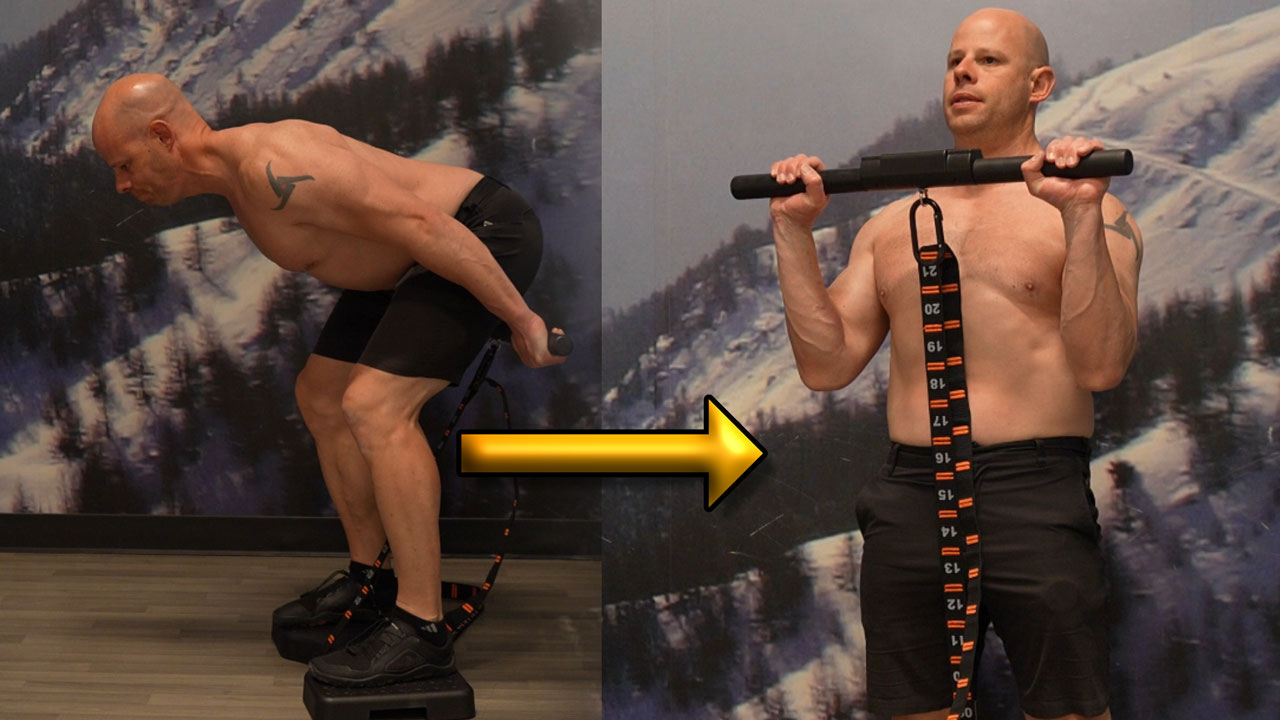
The bent-over lat pull is great for unlocking more chest development.
Since then, the standing lat pull and standing chest press have been staples in my personal training and for my clients. The lat pull is a powerful way to engage the lats and the rest of the back muscles. The standing chest press is a great test to assess how well I’m using my back and integrating my core for proper upper body alignment.
Together, these two exercises create a potent 1-2 punch for correcting imbalances, improving alignment and creating rock-solid stability. Not only are my shoulder injuries a thing of the past, but those qualities have improved every other upper body exercise in every discipline I practice. I even feel the benefits on the bike and while punching a heavy bag.
You’re only as strong as you are stable. It’s a fundamental principle of strength training. If you seek stability, strength and muscle will follow just as sure as thunder follows lightning. It also just so happens that stability is your shield against injury.
Isometric training is the purest form of strength training in existence, which is why I initially turned to it in the pursuit of strength. However, now I know it’s also one of the most potent ways to improve total-body stability. Applying force against an unyielding handle instantly exposes the hidden imbalances that create the instability that robs you of strength and makes your joints frail.
Not only is isometric training the purest form of strength training, it’s also the most fool-proof. Even guys like me who had almost zero athletic prowess, easily improve their stability and strength with a few basic exercises.
And that’s why the isometric lat pull and standing chest press deserve to be strength training staples. Not only do they improve joint-protecting stability, they do so in a most efficient way. You can even experience the benefits of isometric lat activation with a sturdy table top or kitchen counter. All you need to do is pack your shoulders down and back while using your back to apply force into your palms.
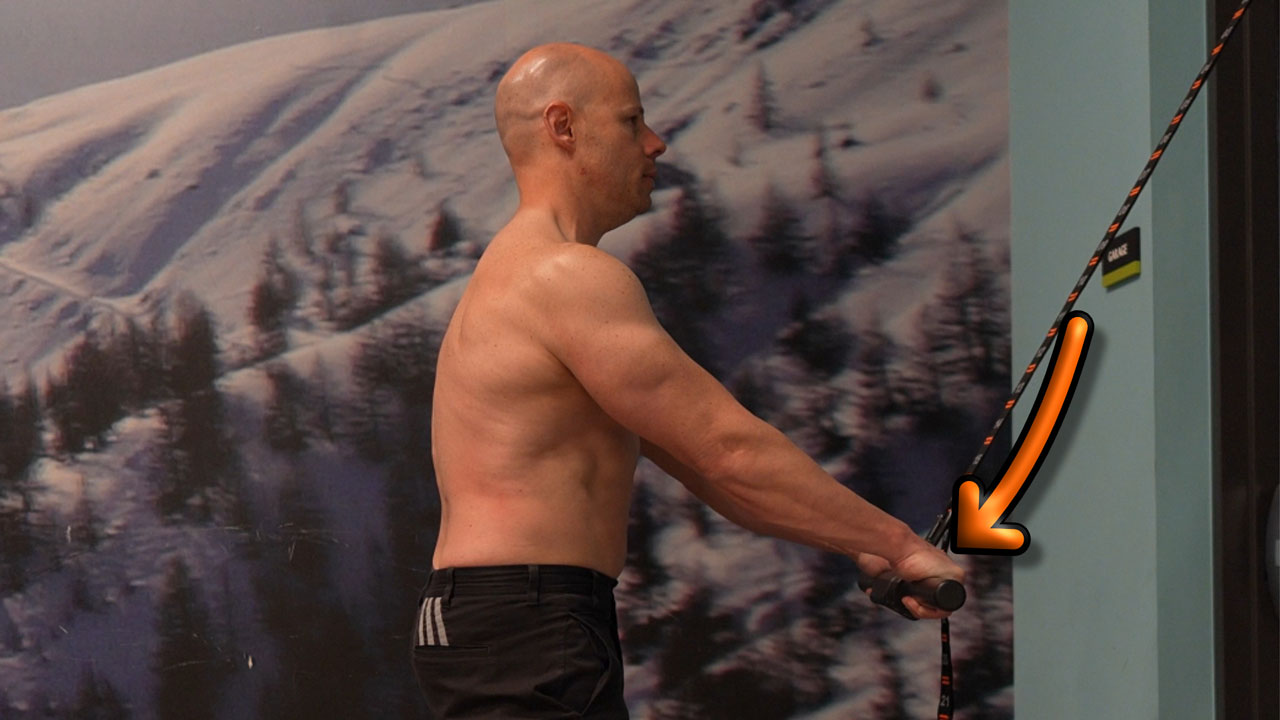
The standing isometric lat pull is another effective shoulder extension exercise. You can even practice it on a sturdy table.
Give this simple technique a try as part of your warm-up before any workout that involves heavy pressing. Your joints will thank you, and reward you with years of pain-free strength in appreciation.
See
IsoMax Isometrics Training Device
Back